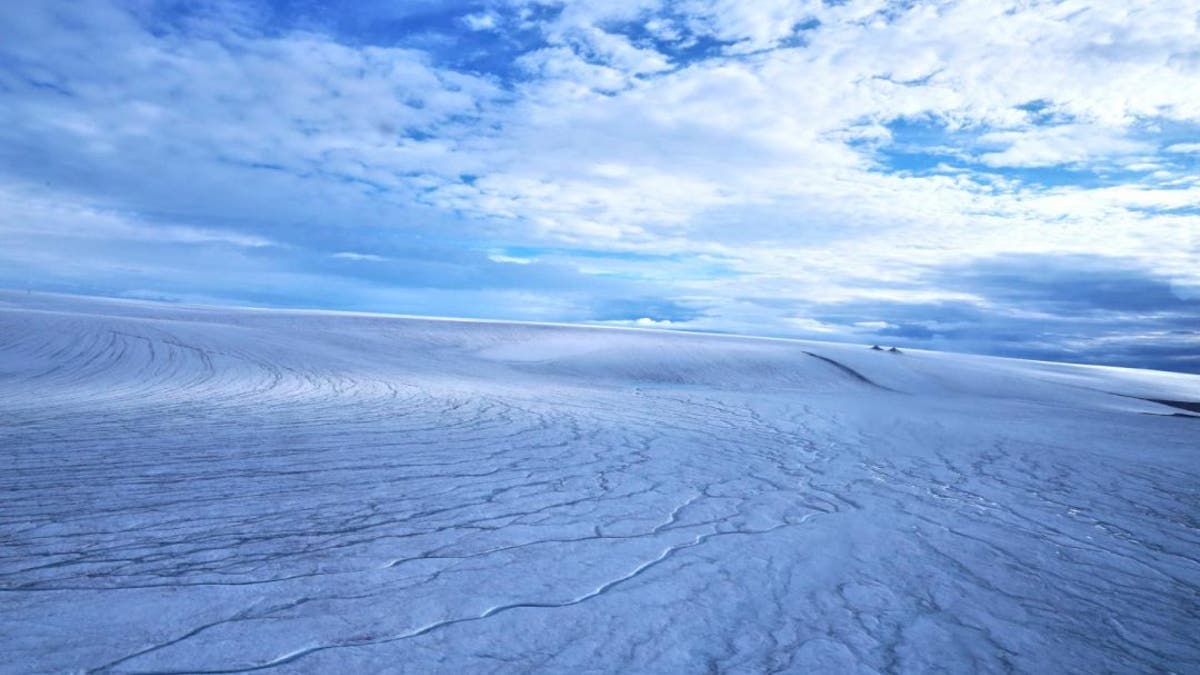Fox News Flash top headlines for August 5
Fox News Flash top headlines are here. Check out what's clicking on Foxnews.com.
As the Perseverance rover heads to Mars to look for signs of ancient life, a new study suggests the Red Planet could have been "covered in ice sheets" and not a valley of rivers, as previously thought.
The research theorizes that if the valleys on Mars work the same way they do on Earth--in particular, those in the Canadian Arctic Archipelago--they would have been formed by water melting beneath glacial ice. This would put a damper to the "warm and wet ancient Mars" theory, thus constraining the climate on the Red Planet and "the search for ancient life."
"For the last 40 years, since Mars's valleys were first discovered, the assumption was that rivers once flowed on Mars, eroding and originating all of these valleys," said the study's lead author, Arizona State University Geophysicist Anna Grau Galofre, in a statement. "But there are hundreds of valleys on Mars, and they look very different from each other."

UBC researchers have concluded that the early Martian landscape probably looked similar to this image of the Devon ice cap. (Credit: Anna Grau Galofre)
ORGANIC MOLECULES FOUND ON MARS 'CONSISTENT WITH .... LIFE,' STUDY SAYS
Galofre continued: "If you look at Earth from a satellite you see a lot of valleys: some of them made by rivers, some made by glaciers, some made by other processes, and each type has a distinctive shape. Mars is similar, in that valleys look very different from each other, suggesting that many processes were at play to carve them."
The study was published in the scientific journal Nature Geoscience.
Galofre and the other researchers analyzed more than 10,000 segments of Martian valleys, using maps created by the Mars Orbiter Laser Altimeter, also known as MOLA, to come up with their findings.
MOLA was an instrument on NASA's Mars Global Surveyor spacecraft that mapped Mars for approximately four-and-a-half-years.
"These results are the first evidence for extensive subglacial erosion driven by channelized meltwater drainage beneath an ancient ice sheet on Mars," study co-author Mark Jellinek added. "The findings demonstrate that only a fraction of valley networks match patterns typical of surface water erosion, which is in marked contrast to the conventional view. Using the geomorphology of Mars' surface to rigorously reconstruct the character and evolution of the planet in a statistically meaningful way is, frankly, revolutionary."
NASA THINKS ALIEN LIFE MIGHT BE HIDING UNDERGROUND IN ANCIENT CAVES ON MARS
The researchers also noted that valleys that may have been formed by melting water from underneath glaciers were spread across the planet, while those formed by rivers were near Arabia Terra, according to Space.com.
"Climate modeling predicts that Mars' ancient climate was much cooler during the time of valley network formation," Grau Galofre added. "We tried to put everything together and bring up a hypothesis that hadn't really been considered: that channels and valleys networks can form under ice sheets, as part of the drainage system that forms naturally under an ice sheet when there's water accumulated at the base."
Researchers continue to learn about Mars' past. A study published in March suggested the Red Planet had two unique reservoirs of ancient water that once flowed deep beneath the planet's surface.

This illustration depicts NASA's Perseverance rover operating on the surface of Mars. (NASA/JPL-Caltech)
In May, scientists discovered 4-billion-year-old organic molecules containing nitrogen in a Martian meteorite, suggesting that Mars could have been "blue" in its past, with water covering the planet's surface.
In June, researchers suggested Mars could have been a ringed planet in its ancient past, as one of its moons, Deimos, has a slightly altered orbit that suggests there was something responsible for its slight tilt.
NASA’s long-term goal is to send a manned mission to Mars in the 2030s.
CLICK HERE TO GET THE FOX NEWS APP
Fox News' James Rogers contributed to this story.





















